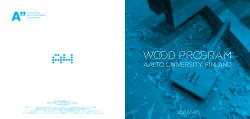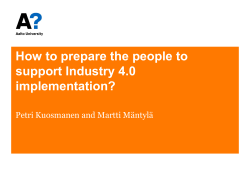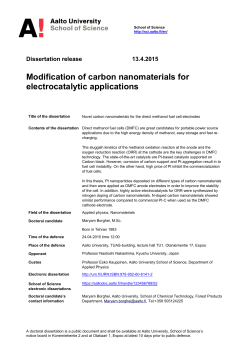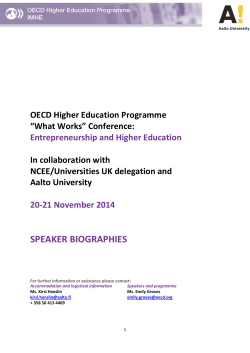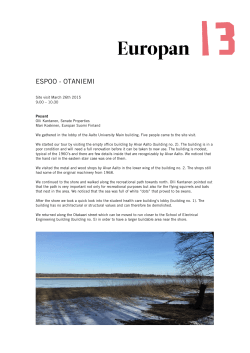
"Terrella Cubica": creating a Birkeland
"Terrella Cubica": creating a Birkeland-like auroral simulator at Aalto University T. Kärkkäinen1 , C. Simon Wedlund1 , E. Kallio1 , M. Alho1 and J. Lilensten2 1 Aalto University, School of Electrical Engineering, Department of Radio Science and Engineering, P.O. Box 13000, FI-00076 Aalto, Finland email: esa.kallio@aalto.fi, cyril.simon.wedlund@aalto.fi, tomi.j.karkkainen@aalto.fi 2 Institut de Planétologie et d’Astrophysique de Grenoble (UJF/CNRS IPAG), BP 53, F38041 Grenoble Cedex 9, France In 1902, Kristian Birkeland started a series of vacuum experiments to reproduce in the laboratory the auroral mechanisms he had theorised: he called them Terrella. The experiment is composed of a vacuum chamber capable of reaching ionospheric-like pressures, and of magnetised spheres (with dipolar magnetic fields). When these spheres are placed in the vacuum, an electric discharge is introduced simulating electrons precipitating along magnetic field lines in the rarefied gas, hence creating auroral ovals. Based on J. Lilensten’s bell-jar design and as part of the Planeterrella European network [1, 2], we report here a revised design of such a device, which consists in a unique cubic single-structure glass vacuum chamber built ’in house’ at Aalto University. Baptised Terrella Cubica, the aim is to support the current space physics cursus of the University Department, by showing plasma phenomena (auroral ovals, ring currents, etc.) usually only witnessed by instruments onboard space missions [3, 4, for project description and examples]. Right: Computer rendering of the Aalto Terc rella Cubica, code name "CubeTerrella" T.K. Aalto University (for more information, see http://space.aalto.fi). [1] Planeterrella, the Polar Light Simulator, retrieved at http://planeterrella.osug. fr/?lang=en on 23-01-2015. [2] Lilensten, J., Barthélemy, M., Simon, C., Jeanjacquot, P., and Gronoff, G., 2009, Acta Geophysica, 57, 220. [3] Lilensten, J., et al., 2013, Journal of Space Weather and Space Climate, 3, AA07. [4] Gronoff, G., and Simon Wedlund, C., 2011, IEEE Transactions on Plasma Science, 39, 2712.
© Copyright 2025


